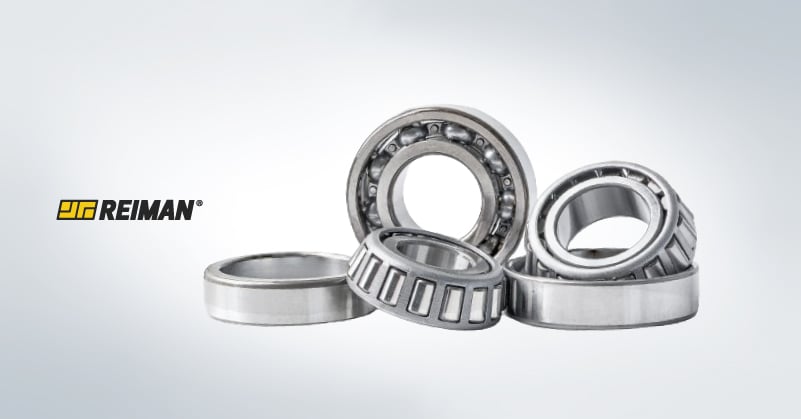We use cookies to make your experience better. To comply with the new e-Privacy directive, we need to ask for your consent to set the cookies. Learn more.
Differences between ball, roller and tapered roller bearings

Differences between ball, roller and tapered roller bearings
A bearing's main function is to reduce friction between different contact surfaces during rotary movement. The bearing is incorporated as the intermediary element between the fixed parts or elements and those that are rotating. These devices have high precision and low friction, allowing for high rotations while minimising noise, heat, and energy consumption.
Regardless of the type of object in which the bearing is located, its overall structure is always the same. There is a set of balls or cylinders within a ring, allowing a force (load) to be applied to the ball or cylinder.
Ball bearings typically contain multiple balls that can support radial and axial loads. With roller bearings, the principle is the same, but with cylindrical or tapered rollers instead of balls. The underlying idea behind both types of bearings is to reduce friction and allow for smooth movement.
Ball Bearings
In ball bearings, a radial load means that the bearing will roll or rotate under tension, while the movement of an axial load depends on the force and the angle.
Characteristics / Advantages of ball bearings:
- Reduced cost;
- Has a single contact point;
- More effective when the force applied to the bearing is perpendicular to its axis of rotation;
- Requires less maintenance compared to roller bearings.
Roller Bearings
The bearing in roller bearings reduces friction to allow for the rotation of heavy radial loads and limited axial loads (without thrust load).
Roller bearings are often used for heavier loads than ball bearings, and as a result, roller bearings can be found in many heavy industrial equipment such as pumps, turbines, and fans. Ball bearings are more common than roller bearings, especially when it comes to objects that can be found at home.
Characteristics / Advantages of cylindrical roller bearings:
- Can support high loads;
- Contains a line of contact that increases durability, stability, and the maximum capacity of the system;
- Designed for an extended service life;
- Withstands higher speeds when housed in a cage;
- High robustness.
Tapered roller bearings
Tapered roller bearings support both radial and axial loads, making them much more versatile. This type of bearing has the ability to withstand very high loads and angular misalignments between the inner and outer rings. They are suitable for vehicle transmissions and machine spindles.
In a tapered roller bearing, the rings and rollers have a conical shape to simultaneously support axial and radial loads. The relationship of the loads depends on the angle of the axes between the roller and the bearing. The larger the angle, the greater the axial load that can be supported. The contact angle for most tapered roller bearings varies between 10 and 16 degrees. For higher thrust load capacity, a contact angle of 30 degrees is used.
Tapered roller bearings are mounted in pairs, as they handle radial loads better than a single row of roller bearings. For heavy-duty applications, two or four rows of tapered rollers are combined into a single unit in large bearings.
Main characteristics:
- Can support high loads;
- High stiffness;
- Low friction;
- Designed for an extended service life;
- High reliability.
For more information, contact Reiman's specialised team.

